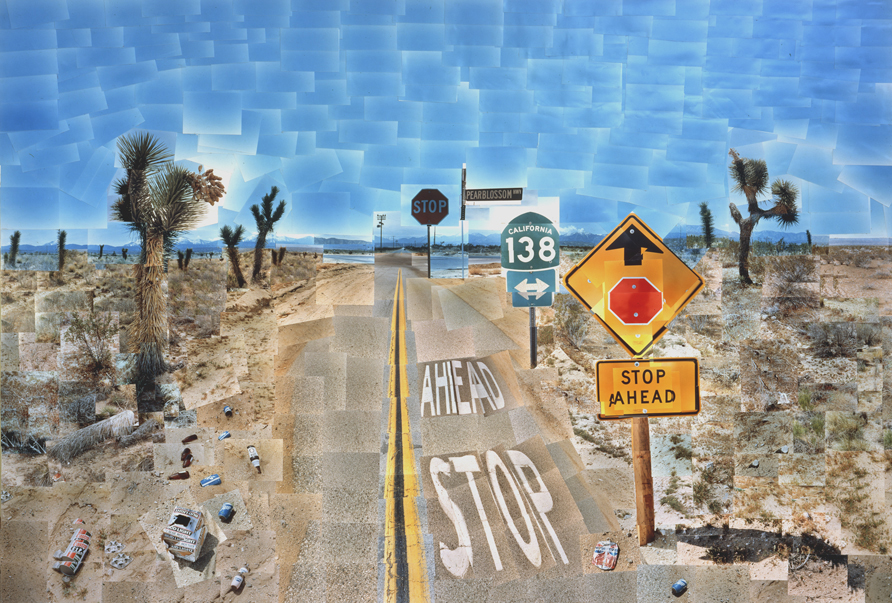The artist himself describes his work as a drawing as opposed to a photographic piece. He has stated that this is because it is a layered composition representing many different viewpoints as opposed to a single, flat photograph.
Hockney has criticised aspects of photography despite using the medium to produce many of his works. He noticed that photographs taken in the late 1960s came out a bit distorted. This lent him to the idea of creating “joiners” i.e photographic collages.
Hockney created Pearblossom Highway over several days while in California. He took many photographs of a view on the notorious route 138, Antelope Valley.
The resulting artwork is a picture of the American landscape from both a driver’s and their passenger’s perspective. The right-hand viewpoint represents what a driver would pay attention to whiling motoring along that stretch; the road signs, the writing on the road itself, the built up destination in the distance – all the things that an attentive driver would consider.
On the left side of the piece is the view from the passenger’s side. Hockney eludes to the fact that a passenger is a more leisurely observer, noticing the scenery, the trees and the litter on the road.
The passenger does not have to attend to the road signs and the driver does not have time to admire the view. The composition also plays on perspective by way of the enlargement of nearer objects. This techniques further emphasises the differing standpoints involved.
The two different perspectives built up from the hundreds of photographs used represents Hockney’s belief that people see the world from multiple viewpoints and that our mind pieces these together to form an interpretation of what we see. The work has been influenced by Cubism; it takes abstract pieces to form a complete picture.
Pearblossom Highway is among Hockney’s most noted pieces of work and one of the standout photographic collages in British history. It was purchased by The Getty Museum in 1997 as an addition to it’s photographic gallery.


